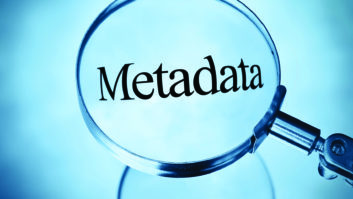Two audio science stories made news over the past week: The successful playback of a recording nearly 150 years old and a new compression scheme under development that is 1,000 times more efficient than MP3.
At the end of March, the First Sounds project announced the successful playback of four phonautograms recorded in 1857, 1859, 1860 and 1878.
Parisian inventor Édouard-Léon Scott de Martinville recoded the audio, including the 1860 10-second snippet of an unidentified person singing the folk song “Au Clair de la Lune” [listen here], with a phonautograph, a device that scratches soundwaves on a piece of paper blacked by smoke from an oil lamp.
Scott used the etchings to examine the sound, but First Sounds historians and engineers devised a way to scan the phonautograms for playback by a computer using a virtual stylus. The same approach has been used to digitize phonographic discs and cylinders.
Fast forward 147 years and researchers at the University of Rochester announced they had successfully compressed a 20-second clarinet solo to a single kilobyte.
“This is essentially a human-scale system of reproducing music,” stated Mark Bocko, professor of electrical and computer engineering and co-creator of the technology. “Humans can manipulate their tongue, breath and fingers only so fast, so in theory we shouldn’t really have to measure the music many thousands of times a second like we do on a CD. As a result, I think we may have found the absolute least amount of data needed to reproduce a piece of music.”
To replay the music, the computer reproduces the original performance based on everything it has been taught about clarinets and clarinet playing — from backpressure in the mouthpiece for different fingerings to the way sound radiates from the instrument.
Bocko said the sound reproduction is not yet perfect, but it is very close.












